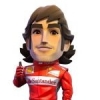Archived
This topic is now archived and is closed to further replies.

Racing In 2012: Exciting Or A Lottery?
By
JHS18, in F1 Discussions
This topic is now archived and is closed to further replies.

By
JHS18, in F1 Discussions
12 members have voted